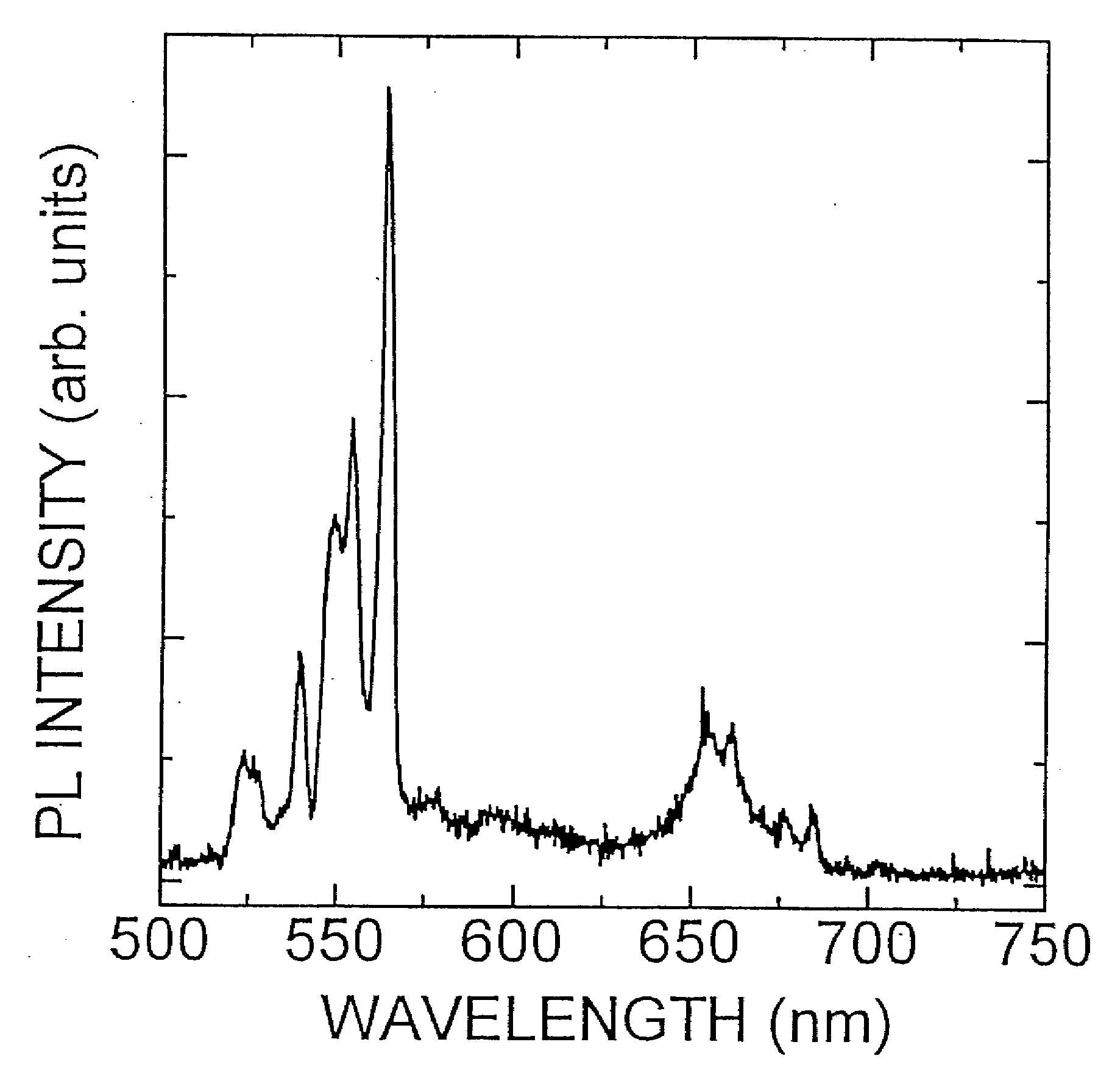Fine particles containing rare earth element and fluorescent probe using the same
a technology of rare earth elements and fluorescent probes, applied in the direction of instruments, yittrium oxides/hydroxides, transportation and packaging, etc., can solve the problems of uv light damage molecules, excitation light damage to analyze or detect subjects, and possible deterioration, and achieve excellent light emitting efficiency and negative effects on subjects.
- Summary
- Abstract
- Description
- Claims
- Application Information
AI Technical Summary
Benefits of technology
Problems solved by technology
Method used
Image
Examples
examples
[0115]Hereinafter, the present invention will be described in detail with reference to the following examples.
1. Production of Core Portion, or the Second Fine Particles Containing a Rare Earth Element
[0116]First, a method for producing a core portion containing a rare earth element characterized in emitting the up-conversion emission will be described.
1-1. Y2O3: Yb, Er Fine Particles
[0117]Y2O3: Yb, Er fine particles were produced by preparing a precursor doped with Yb and Er, by a liquid phase reaction, and then by calcination of the precursor. The manufacturing process is as follows.
[0118]First, 0.0158 mol of yttrium nitrate, 0.004 mol of ytterbium nitrate and 0.0002 mol of erbium nitrate were dissolved in distilled water such that the volume of the mixture was 100 ml, thereby preparing a Y, Yb, Er ion-mixture solution. 100 ml of sodium carbonate aqueous solution (0.3 mol / l) was added to the above mentioned Y, Yb, Er ion-mixture solution, and the mixture was stirred for 2 hours.
[0...
PUM
| Property | Measurement | Unit |
|---|---|---|
| wavelength | aaaaa | aaaaa |
| particle diameter | aaaaa | aaaaa |
| particle diameter | aaaaa | aaaaa |
Abstract
Description
Claims
Application Information
 Login to View More
Login to View More - R&D Engineer
- R&D Manager
- IP Professional
- Industry Leading Data Capabilities
- Powerful AI technology
- Patent DNA Extraction
Browse by: Latest US Patents, China's latest patents, Technical Efficacy Thesaurus, Application Domain, Technology Topic, Popular Technical Reports.
© 2024 PatSnap. All rights reserved.Legal|Privacy policy|Modern Slavery Act Transparency Statement|Sitemap|About US| Contact US: help@patsnap.com










